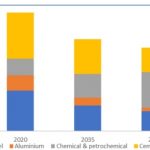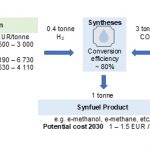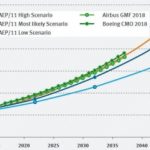Like many countries, the U.S. is set to raise oil and gas production to compensate for cuts in Russian imports consequent to the war in Ukraine. The danger is that short-term solutions to sky rocketing fossil fuel prices will take precedence over climate targets. But Ben Cahill at CSIS explains how this is an opportunity for the Biden administration to give support to fossil energy producers with one hand and extract solid commitments on … [Read more...]
What if Carbon Capture fails? Modelling the consequences and solutions
Most policy scenarios being used by governments include carbon capture as a vital tool to reduce emissions. Though it’s far from proven at scale, models assume that between 2030 and 2050 carbon dioxide removal (CDR) will get its act together and deliver on its part in the net-zero puzzle. Assuming that will happen, burning fossil fuels can continue for longer. But Neil Grant and Ajay Gambhir at Imperial College London, writing for Carbon Brief, … [Read more...]
Norway an EV role model? Their pathway is expensive and paid for with oil & gas exports
Norway is an EV leader thanks to a generous pot of tax incentives. Today, battery-electric cars make up more than half of all new car sales in Norway. Schalk Cloete takes a detailed look at what those incentives cost, and how many tonnes of CO2 they avoid. In short, Norway – a major oil and gas exporter - needs to sell over 100 barrels of oil (which emits 40 tonnes of CO2) to pay for the tax breaks it gives EVs to avoid one tonne of CO2. And … [Read more...]
Aviation should be given target dates for zero-emissions. It’s working for cars and trucks
The French government’s decision to ban some short-haul flights if there is a rail alternative under two and a half hours is only symbolic, says Andrew Murphy at T&E. It would reduce French aviation emissions by only 0.8%. Expanded to rail journeys under five hours and it’s still only 4.5%. Long-haul flying is the much bigger problem, but the resulting emissions are outside of France’s current climate target. Instead of just talking about … [Read more...]
Aviation and Shipping emissions: will Biden take on the challenge?
William Todts at Transport & Environment is very worried about the Biden administration’s approach to aviation and shipping emissions. The signals are that the U.S. wants to work through the International Civil Aviation Organization (ICAO) and the International Maritime Organization (IMO). But they have neither the ability nor the means to spur technological breakthroughs. That matters, because it’s only the use of alternative fuels that can … [Read more...]
Decarbonising Industry is key to China’s net-zero strategy
China has committed to a CO2 emissions peak before 2030 and carbon neutrality before 2060. It’s 14th 5-year plan will be released in March, followed by sector-oriented plans. For the first time it will include a dedicated plan addressing climate change. Dolf Gielen, Yong Chen and Paul Durrant at IRENA start by laying out China’s energy mix for scrutiny, then dive into its industrial sector which accounts for 60% of gross final energy use. Success … [Read more...]
The outlook for Powerfuels in aviation, shipping
The development and commercialisation of powerfuels is in its very early stages. Powerfuels are synthetic gaseous and liquid fuels produced from green electricity. The plan is to use them when there is no viable alternative, like aviation and shipping. The big hurdle is cost, currently in the range of €3-5/litre, or five to ten times the price of fossil fuels. Dolf Gielen and Gabriel Castellanos at IRENA and Kilian Crone at the German Energy … [Read more...]
Aviation’s multiple challenges: from renewable fuels to non-CO2 emissions
Barely the first steps towards climate-neutral aviation have been made. High energy density renewable fuels are needed, and at scale. But even as they become available, hard-to-abate industries will be queuing up to buy them first. And then there’s reducing the "non-CO2 effects" that, according to Germany's environment agency (UBA), can harm the climate twice as much as direct CO2 emissions: condensation trails, particles and other greenhouse … [Read more...]
10 Carbon Capture methods compared: costs, scalability, permanence, cleanness
We need to understand carbon capture, storage and utilisation (CCUS) better. To do so, this article looks at 10 methods and estimates how much CO2 each will take out of the atmosphere by 2050, and the cost per tonne. In their list the authors, Ella Adlen and Cameron Hepburn at the University of Oxford, cover the industrial (e.g. CO2-EOR, synfuels) to the biological (e.g. forestry, soil carbon sequestration). They say there are six that can be … [Read more...]










